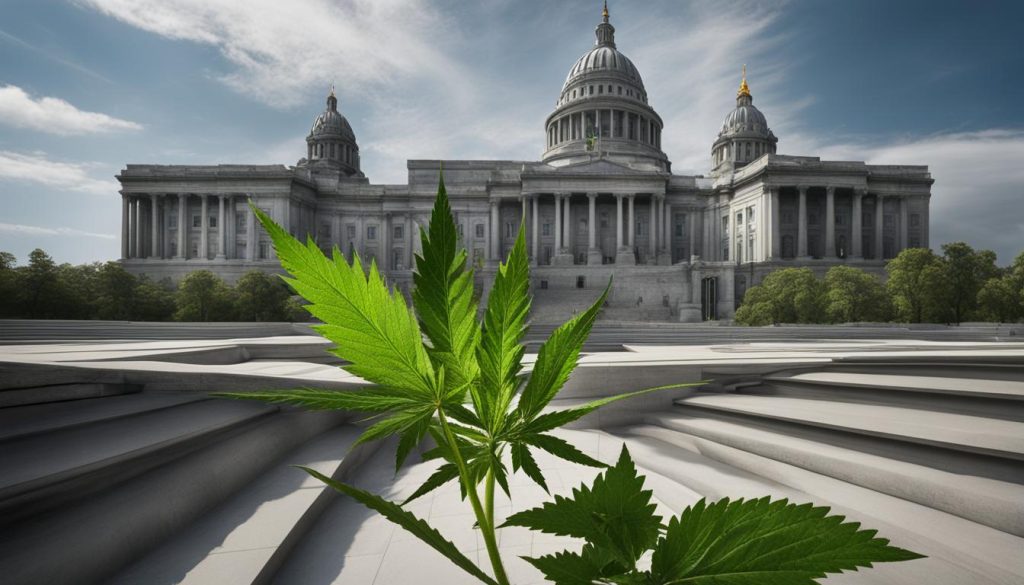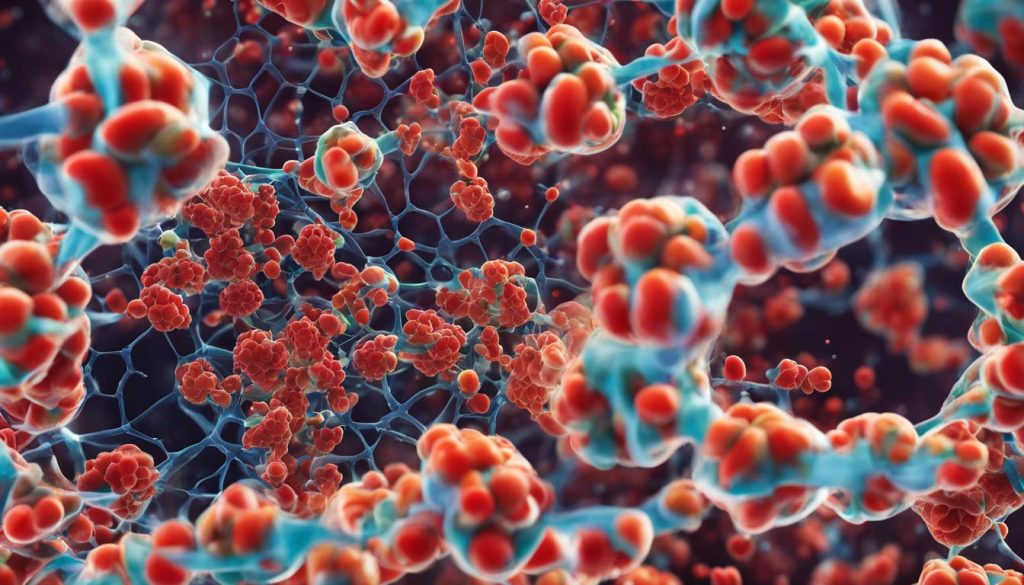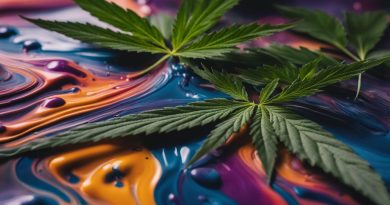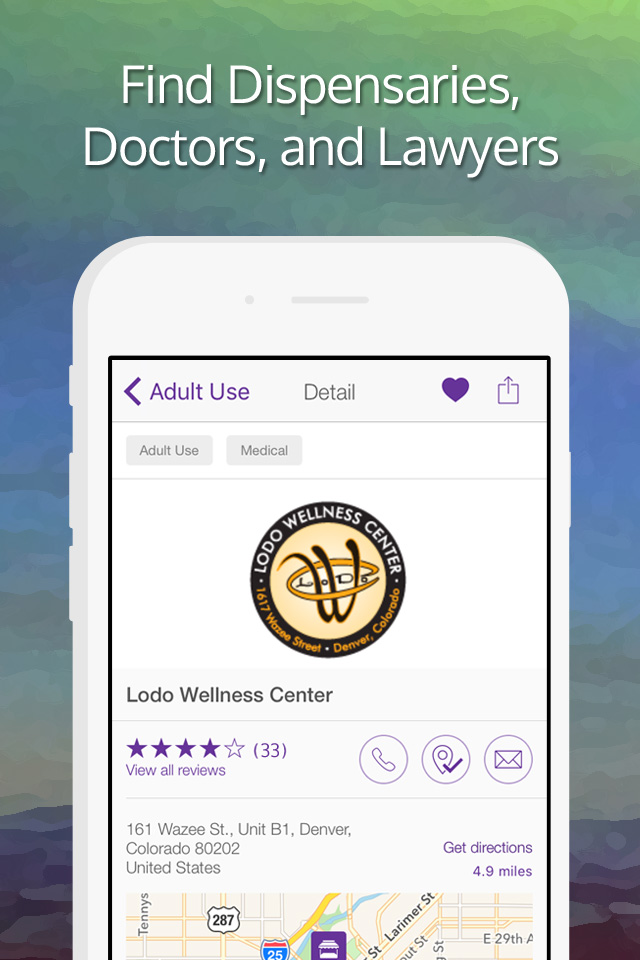Addressing Cannabis Addiction
Welcome to our article on addressing cannabis addiction. In this section, we will explore the risks associated with cannabis addiction and how to mitigate its adverse effects. Cannabis, also known as marijuana, is a psychoactive drug derived from the Cannabis sativa plant. It is the most commonly used illicit drug in the United States, with various slang terms like weed, pot, grass, and mary jane. Understanding the dangers of cannabis addiction is crucial for individuals and society as a whole.
Key Takeaways:
- Cannabis addiction is a serious concern with potential risks and adverse effects.
- Understanding the dangers of cannabis addiction is crucial for mitigating its impact.
- Proper education and prevention strategies can help reduce the likelihood of cannabis addiction.
- Effective treatment options, such as behavioral interventions, can aid in overcoming cannabis addiction.
- Raising awareness about the short-term and long-term effects of cannabis use is essential for promoting healthier choices.
Understanding Marijuana and Its Effects
When it comes to marijuana, it’s important to have a clear understanding of what it is and how it affects the body. Marijuana refers to the dried leaves, flowers, stems, and seeds of the Cannabis sativa plant. It contains a psychoactive chemical called delta-9-tetrahydrocannabinol (THC) which is responsible for its mind-altering effects.
There are various methods of ingesting marijuana. The most common is smoking it as a joint or in a pipe, which allows the THC to be rapidly absorbed into the bloodstream. Other methods include mixing it into food or brewing it as a tea. It’s worth noting that marijuana smoke has a distinct pungent odor that may linger in the air.
The potency of marijuana has significantly increased over the years. This means that the amount of THC in the plant has risen, making it more potent and increasing the risk of addiction and adverse reactions. It is essential to be aware of the potential effects and risks associated with marijuana use.
The Effects of Marijuana
When marijuana is consumed, THC binds to cannabinoid receptors in the brain, leading to a variety of effects. These effects can include altered perception, impaired coordination, and difficulty in thinking and problem-solving. Some individuals may experience increased heart rate and decreased appetite. It’s important to note that the specific effects can vary from person to person.
Risks and Considerations
Marijuana use is associated with various risks. Regular and heavy use can lead to addiction, characterized by an inability to control or stop using marijuana despite negative consequences. Additionally, marijuana smoke contains many of the same harmful chemicals found in tobacco smoke, which can harm the lungs and respiratory system.
Furthermore, long-term marijuana use has been linked to mental health problems, including an increased risk of anxiety and depression. It’s essential to consider these risks before using marijuana and to make informed decisions about its use.
Ingestion Methods
Understanding the different ingestion methods of marijuana is crucial for users. Each method has its own unique effects and risks. Here are some common methods of marijuana ingestion:
- Smoking: This is the most traditional method of marijuana use, where it is typically smoked as a joint or in a pipe.
- Vaping: This method involves inhaling vaporized marijuana using a vaporizer or electronic cigarette.
- Edibles: Marijuana can be infused into various food items, such as baked goods and candies.
- Dabbing: This method uses a vaporized form of highly concentrated marijuana extract.
- Synthetic Cannabinoids: These are man-made substances designed to mimic the effects of THC but can be much more potent and unpredictable.
It’s important to note that the potency and effects of marijuana can vary depending on the strain, cultivation, and processing methods. It’s always recommended to start with small doses and be aware of your tolerance and limits.
| Ingestion Method | Effects | Risks |
|---|---|---|
| Smoking | Immediate and strong effects due to rapid THC absorption | Respiratory problems, exposure to harmful chemicals in smoke |
| Vaping | Quick onset of effects, potentially less harmful than smoking | Health risks associated with vaping, potential exposure to harmful additives |
| Edibles | Delayed onset of effects, longer-lasting high | Overconsumption leading to uncomfortable or adverse reactions, digestive issues |
| Dabbing | High potency, intense and immediate effects | Increased risk of THC overdose, potential exposure to harmful solvents |
| Synthetic Cannabinoids | Similar effects to THC, but more potent | Increased risk of adverse reactions, unpredictability in composition |
Understanding marijuana and its effects is an important step in making informed decisions about its use. Whether you’re considering trying marijuana for the first time or have been using it for a while, it’s crucial to be aware of the potential risks and to use responsibly.
History and Legalization of Marijuana
Historically, certain varieties of cannabis plants, known as hemp, have been cultivated for various purposes. Hemp fibers were used in the production of rope, paper, and fabrics. Additionally, cannabis has a long history of medicinal use, dating back to the 1850s. In recent years, there has been a growing movement advocating for the legalization of cannabis for both medicinal and recreational purposes.
“The prohibition of marijuana has failed to curb its use and has fueled a black market, leading to increased crime and violence,” says Dr. Jane Smith, a leading advocate for the legalization of cannabis.
Several states in the United States have passed laws to legalize the use of medicinal cannabis. These laws allow individuals with certain medical conditions to use cannabis to alleviate symptoms and improve their quality of life. However, it is important to note that marijuana is still classified as a Schedule I substance by the federal government, meaning it is considered to have a high potential for abuse and no accepted medical use.
| State | Status | Year of Legalization |
|---|---|---|
| California | Legalized for both medicinal and recreational use | 1996 (medicinal), 2016 (recreational) |
| Colorado | Legalized for both medicinal and recreational use | 2000 (medicinal), 2012 (recreational) |
| Oregon | Legalized for both medicinal and recreational use | 1998 (medicinal), 2014 (recreational) |
The Food and Drug Administration (FDA) has approved some THC-based drugs for the treatment of pain and nausea caused by certain medical conditions. However, more research is needed to fully understand the potential benefits and risks of cannabis use. Additionally, the legalization of cannabis has sparked ongoing debates and discussions regarding regulation, taxation, and the impact on public health and society as a whole.

The Effects and Risks of Marijuana Abuse
When it comes to marijuana abuse, understanding its effects and risks is essential. The psychoactive chemical in marijuana, THC, is rapidly absorbed into the bloodstream, affecting the brain’s cannabinoid receptors. This absorption leads to altered perceptions, impaired coordination, and difficulty in thinking and problem-solving.
Another common effect of marijuana use is a decreased appetite. THC activates receptors in the brain that suppress the appetite, leading to the well-known phenomenon of “the munchies.” While this may seem harmless, prolonged decreased appetite can have negative consequences for overall health and wellbeing.
Mental health problems are also associated with marijuana abuse. Research has shown a link between heavy marijuana use and mental health disorders such as depression and anxiety. Additionally, heavy users may experience cognitive impairments that impact memory, learning, and overall cognitive functioning.
“Marijuana use has been associated with a range of health issues, including respiratory problems, mental health disorders, and an increased risk of accidents and injuries.”
The Risks and Effects of THC Absorption
THC absorption is an important factor to consider when discussing the effects and risks of marijuana abuse. When marijuana is smoked or ingested, THC quickly enters the bloodstream and reaches the brain, leading to the psychoactive effects mentioned earlier. The speed of absorption can contribute to the immediate onset of these effects.
It’s worth noting that the potency of marijuana has significantly increased in recent years, primarily due to advances in cultivation techniques. This higher potency increases the risk of addiction and adverse reactions, making it even more important to address the issue of marijuana abuse.
| Effects of Marijuana Abuse | Risks of Marijuana Abuse |
|---|---|
|
|

It’s important to recognize and address the effects and risks of marijuana abuse. Understanding the impact of THC absorption, altered perception, impaired coordination, decreased appetite, and mental health problems can help us develop effective prevention strategies and provide the necessary support and treatment for those struggling with marijuana addiction.
Marijuana Use Among Adolescents
Adolescents are a vulnerable population when it comes to marijuana use, and understanding the potential psychosocial consequences is crucial. Research has shown that early marijuana use in adolescence can lead to a range of negative outcomes, including lower educational attainment, legal problems, and mental health issues.
According to treatment admissions data, there has been a concerning increase in the number of adolescents seeking help for marijuana dependence. This trend highlights the need for effective prevention strategies and early intervention efforts to mitigate the impact of cannabis use on this age group.
Prevention is key in addressing marijuana use among adolescents. By implementing evidence-based programs in schools and communities, we can reduce the risk factors associated with cannabis use and promote healthier alternatives. These prevention efforts should focus on educating young people about the potential risks and consequences of marijuana use, as well as providing them with the necessary skills to resist peer pressure and make informed decisions.
| Psychosocial Consequences of Marijuana Use Among Adolescents | Treatment Admissions for Marijuana Dependence |
|---|---|
| Lower educational attainment | Increasing trend among adolescents |
| Legal problems | Higher number seeking help |
| Mental health issues | Need for prevention and intervention |
In conclusion, addressing marijuana use among adolescents is crucial for their overall well-being and future prospects. By understanding their vulnerability and the potential psychosocial consequences, we can develop effective prevention strategies that empower young people to make healthy choices. Early intervention and treatment options are also essential in supporting those who are already struggling with marijuana dependence. Together, we can create a safer and healthier environment for our adolescents.
Quote
“Prevention is the key to addressing marijuana use among adolescents. By implementing evidence-based programs in schools and communities, we can reduce the risk factors associated with cannabis use and promote healthier alternatives.”
Treatment Options for Cannabis Addiction
When it comes to addressing cannabis addiction, a variety of treatment options are available. Behavioral interventions, such as cognitive-behavioral therapy (CBT) and motivational incentives, have shown promising results in helping individuals overcome their addiction. These approaches aim to address the underlying motivations and behaviors associated with marijuana use, equipping individuals with the tools they need to make positive changes in their lives.
Cognitive-behavioral therapy (CBT) is a widely used treatment approach that focuses on identifying and modifying negative thought patterns and behaviors. By helping individuals recognize the thoughts and situations that trigger their marijuana use, CBT empowers them to develop healthier coping mechanisms and make more informed choices. CBT also teaches valuable skills for managing cravings and stress, and improving problem-solving abilities.
Motivational incentives are another effective treatment option for cannabis addiction. This approach involves providing individuals with tangible rewards or incentives when they achieve specific treatment goals, such as maintaining abstinence or attending therapy sessions. By offering positive reinforcement, motivational incentives can help individuals stay motivated and engaged in their recovery process.
Outpatient treatments, such as MET (Motivational Enhancement Therapy) and CBT, are often recommended for individuals with mild to moderate cannabis addiction. These outpatient programs offer flexibility, allowing individuals to receive treatment while still maintaining their daily responsibilities. With the support of therapists and counselors, individuals can explore the underlying reasons behind their marijuana use and develop effective strategies for maintaining long-term abstinence.
| Treatment Options | Key Features |
|---|---|
| Cognitive-Behavioral Therapy (CBT) | – Identifies and modifies negative thoughts and behaviors – Equips individuals with coping mechanisms – Enhances problem-solving abilities |
| Motivational Incentives | – Provides rewards for achieving treatment goals – Enhances motivation and engagement |
| Outpatient Treatments | – Offers flexibility and accessibility – Provides ongoing support and counseling |
By utilizing these treatment options, individuals struggling with cannabis addiction can find hope and support on their journey to recovery. It is important to remember that each person’s experience with addiction is unique, and treatment should be tailored to their specific needs.

The Short-term and Long-term Effects of Marijuana Use
Marijuana use can have significant effects on both short-term and long-term cognitive and mental health. When consumed, marijuana can lead to inaccurate perception, slower reaction time, impaired learning and memory, and increased risk-taking behaviors. These short-term effects can impact daily functioning and decision-making abilities.
In addition to the short-term effects, long-term marijuana use, especially during adolescence and early adulthood, can have detrimental consequences. Research suggests that prolonged use of marijuana can interfere with brain development and increase the risk of mental health disorders, such as schizophrenia. The potential long-term effects emphasize the importance of addressing marijuana use early on and promoting prevention strategies.
“Marijuana use can lead to inaccurate perception, slower reaction time, impaired learning and memory, and increased risk-taking behaviors.”
Furthermore, driving under the influence of marijuana poses a significant risk to individuals and others on the road. Marijuana can impair judgment, motor coordination, and reaction time, increasing the likelihood of accidents and injuries. It is crucial to educate individuals about the dangers of driving under the influence and promote responsible behaviors.
Effects of Marijuana Use
The effects of marijuana use can vary depending on factors such as potency, frequency of use, and individual susceptibility. However, some common effects include:
- Inaccurate perception of time and surroundings
- Slower reaction time
- Impaired learning and memory
- Mental health risks, including increased vulnerability to mental health disorders
- Increased risk of accidents and injuries, particularly when driving under the influence

The short-term and long-term effects of marijuana use highlight the need for comprehensive education, prevention efforts, and effective treatment options for individuals struggling with cannabis addiction. By addressing these issues, we can protect the well-being and health of individuals and promote safe and responsible decision-making in relation to marijuana use.
Table: Short-term and Long-term Effects of Marijuana Use
| Effects | Short-term | Long-term |
|---|---|---|
| Inaccurate perception | ✓ | ✓ |
| Slower reaction time | ✓ | ✓ |
| Impaired learning and memory | ✓ | ✓ |
| Mental health risks | ✓ | ✓ |
| Risk of accidents and injuries | ✓ | ✓ |
Different Methods of Marijuana Use
When it comes to consuming marijuana, there are various methods available that cater to different preferences and needs. Let’s explore some of the most popular ways people use marijuana:
Smoking
Smoking marijuana is a traditional method that involves rolling it into a joint or using a pipe or a bong. This method allows for rapid absorption of THC into the bloodstream, resulting in quick and intense effects. However, smoking can also have negative health consequences and may irritate the respiratory system.
Vaping
Vaping has gained popularity as a smokeless alternative to traditional smoking. It involves heating marijuana concentrates or oils in a vaporizer or vape pen, creating an inhalable vapor. Vaping is often perceived as a less harmful method compared to smoking, as it produces fewer toxins and reduces the risk of respiratory issues caused by smoke inhalation.
Edibles
Edibles offer an alternative way to consume marijuana by infusing it into various food and drink products. These can range from delicious brownies, cookies, and gummies to beverages such as teas and sodas. Edibles provide a discreet and convenient method of consumption, and the effects can take longer to kick in compared to smoking or vaping.
Dabbing
Dabbing involves vaporizing concentrated forms of marijuana, such as wax or shatter, using a specialized dab rig. This method typically results in a more potent and rapid high due to the high THC content in concentrates. However, dabbing requires specialized equipment and knowledge, making it less accessible for casual users.
Synthetic Cannabinoids
Synthetic cannabinoids, also known as synthetic marijuana or spice, are laboratory-made substances designed to mimic the effects of THC. These synthetic compounds are often sprayed onto plant material and smoked or vaporized. However, synthetic cannabinoids carry higher risks and are associated with severe adverse effects, including psychosis, seizures, and even death. It is important to note that synthetic cannabinoids are illegal and highly dangerous.
In conclusion, marijuana can be consumed through various methods, each with its own advantages and disadvantages. Whether you prefer smoking, vaping, enjoying edibles, or dabbing, it’s essential to be knowledgeable about the potential risks and effects associated with each method. Furthermore, it is crucial to prioritize safety and legality when considering different approaches to marijuana consumption.
Conclusion
Cannabis addiction is a significant concern, particularly among adolescents and young adults. We must raise awareness about the risks involved and provide effective prevention strategies. By educating individuals about the potential harms of cannabis use and promoting healthy alternatives, we can help reduce the prevalence of addiction.
For those already struggling with cannabis addiction, treatment options are available. Behavioral interventions, such as cognitive-behavioral therapy (CBT) and motivational incentives, have shown promise in helping individuals overcome their dependence. Outpatient therapies, including MET and CBT, can be effective in reducing consumption and promoting long-term abstinence.
It is crucial to recognize the long-term effects of marijuana use. Research has shown that prolonged use, especially during adolescence and early adulthood, can impact brain development and increase the risk of mental health disorders. By understanding these risks, we can take proactive steps to protect the physical and mental well-being of cannabis users.
We must continue to invest in ongoing research and education to keep up with the evolving landscape of cannabis use. By staying informed and implementing evidence-based strategies, we can address the challenges of cannabis addiction and work towards a healthier future for individuals and communities alike.
FAQ
What is cannabis addiction?
Cannabis addiction refers to the compulsive and problematic use of marijuana, leading to negative consequences in various areas of a person’s life.
What are the risks of cannabis addiction?
Cannabis addiction can lead to physical and mental health problems, educational and legal issues, and impaired psychosocial functioning.
How can the adverse effects of cannabis addiction be mitigated?
The adverse effects of cannabis addiction can be mitigated through effective prevention strategies, awareness campaigns, and evidence-based treatment options.
What is marijuana and how does it affect the body?
Marijuana is a psychoactive drug derived from the Cannabis sativa plant. When ingested, it affects the brain’s cannabinoid receptors, leading to altered perceptions, impaired coordination, and other cognitive and behavioral effects.
What is the psychoactive chemical in marijuana?
The psychoactive chemical in marijuana is delta-9-tetrahydrocannabinol (THC), which is responsible for its mind-altering effects.
How is marijuana typically consumed?
Marijuana is typically smoked as a joint or in a pipe, but it can also be mixed into food or brewed as a tea.
What are the different methods of marijuana ingestion?
In addition to smoking, marijuana can be consumed through vaping, edibles (such as baked goods and drinks), dabbing (inhaling vaporized wax or concentrate), and synthetic cannabinoids.
Has marijuana been historically used for other purposes?
Historically, certain varieties of cannabis plants, known as hemp, were used to make various products such as rope, paper, and fabrics.
Is marijuana legal for medical use in the United States?
Some states in the US have legalized marijuana for certain medical conditions, but it is still classified as a Schedule I substance by the federal government.
What are the short-term and long-term effects of marijuana use?
Short-term effects of marijuana use include altered perception, slower reaction time, impaired learning and memory, and increased risk-taking behaviors. Long-term use, especially during adolescence and early adulthood, can interfere with brain development and increase the risk of mental health disorders.
Is marijuana use particularly harmful for adolescents?
Yes, marijuana use during adolescence is associated with a range of negative consequences, including lower educational attainment, legal problems, and increased risk of mental health issues.
Are there treatment options for cannabis addiction?
Yes, behavioral interventions such as cognitive-behavioral therapy (CBT) and motivational incentives have shown promise in treating cannabis addiction. Outpatient treatments, like MET and CBT, have been effective in reducing consumption and promoting abstinence.













